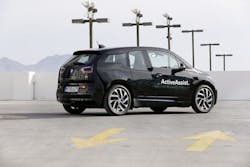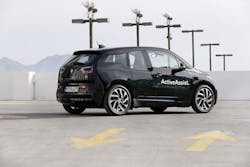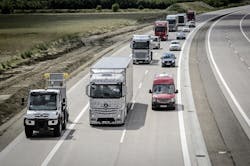Ah, the wondrous world of “connected vehicles,” whereby technology will enable motor vehicles not only to “talk” to one another, but to chat with “external” items as well such as traffic lights, crosswalk signals, even buildings.
Why are such systems a big deal? Well, for starters, the Department of Transportation (DOT) figures that vehicle-to-external communications (V2X) technology alone could help prevent 70% to 80% of vehicle crashes.And that’s why we should see an explosion in market demand for such technology, argues Sam Abuelsamid, senior research analyst with Navigant Research, in a new report.
“Connected vehicles have enormous potential to provide drivers with increased situational awareness of upcoming hazards and congestion,” he explained in Navigant’s latest study on the topic.
“Automakers and governments are striving to meet consumer demands for safer cars with lower emissions and energy consumption,” Abuelsamid said. “This push is driving the development of a number of crucial technologies, including electrification and automated driving systems that rely on real-time data to vehicles, drivers, and pedestrians, through connected vehicle systems as V2X.”
So what does such “demand” in terms of dollars and cents? Navigant estimates that pure revenue from connected vehicle systems is expected to grow from $96.3 million annually next year to $36.6 billion by 2025.
Yep, that’s “billion” with “b.”
One reason such big money will be floating around the “connect vehicle” market is that it’s going to take a lot of cash to develop such systems – especially for commercial trucks.Last month, Sandeep Kar, global director of research, automotive and transportation for global consulting firm Frost & Sullivan, noted in a presentation that “connected vehicle” technology – a key stepping stone to “autonomous vehicle” operation – will help add some $18,000 to the base cost of Class 8 truck by 2025.
And that’s the manufacturer’s cost, mind you. The retail upcharge for such technology could run to between $35,000 and $50,000 extra per truck in North America he explained.
“A lot of R&D [research and development] cost is being redirected to autonomous technologies,” Kar noted in a Fleet Forum presentation during the Mid America Trucking Show back in March. “The algorithms alone represent about 25% to 39% of that cost.”
Now, the price tag just for “connected” technologies, especially on light-duty vehicles, shouldn’t run nearly as high (though when the talk turns to self-driving cars, those numbers will surely climb … and quickly).
Still this all represents a big change from how vehicles operate day-to-day in our mobile world. That will take some adjusting to, no doubt.


